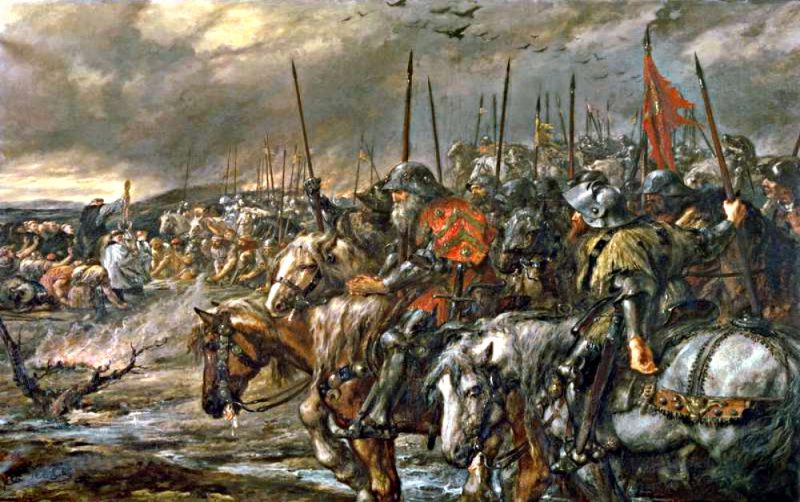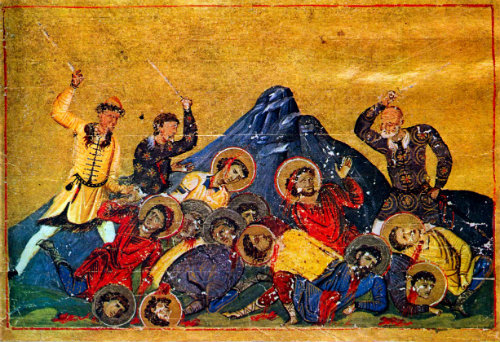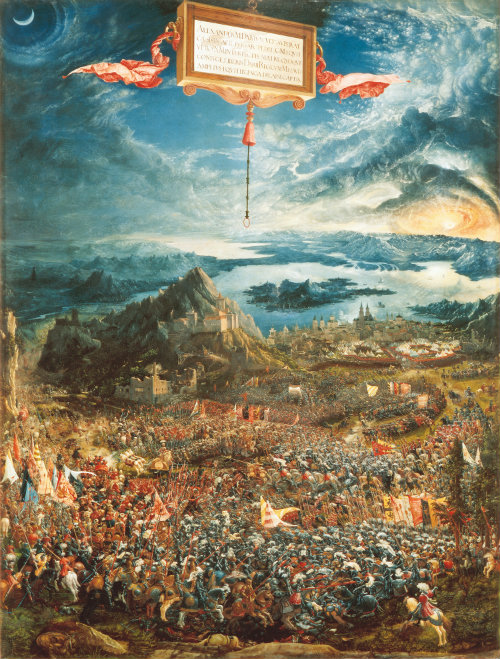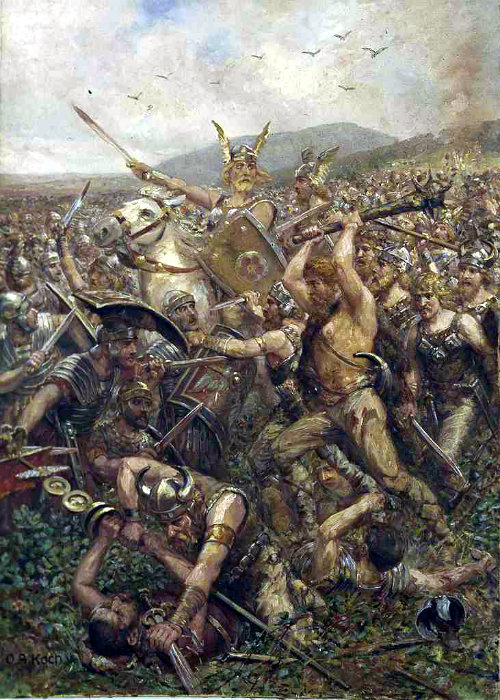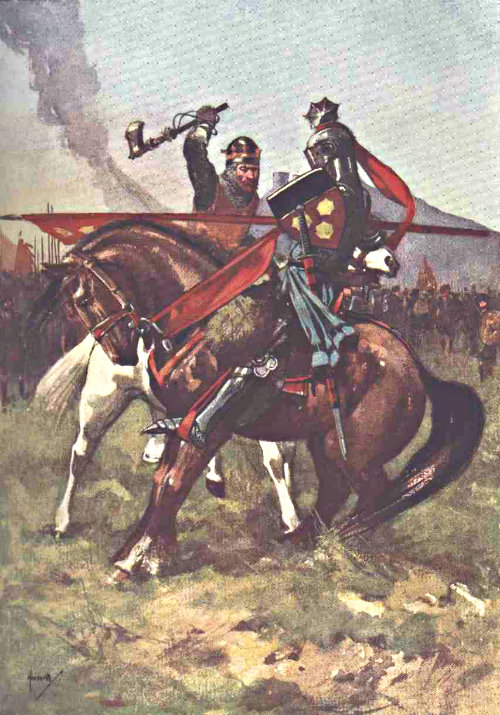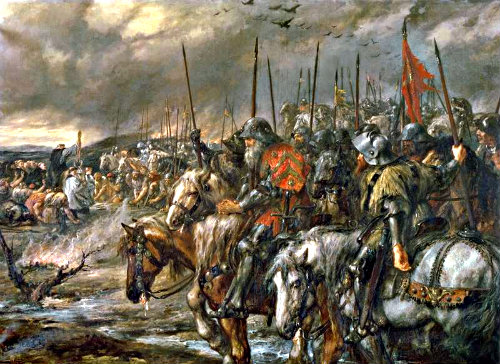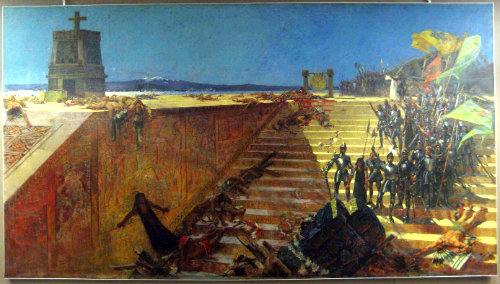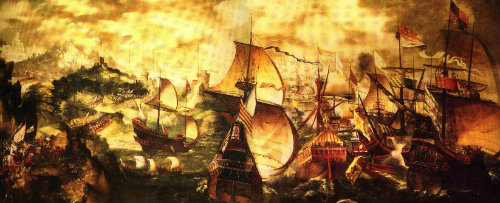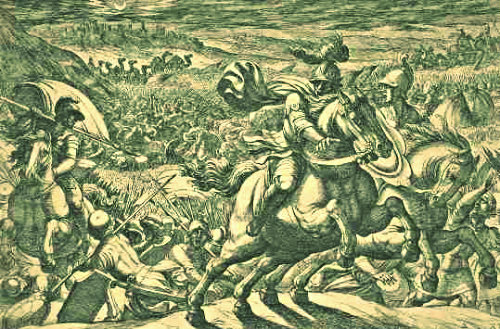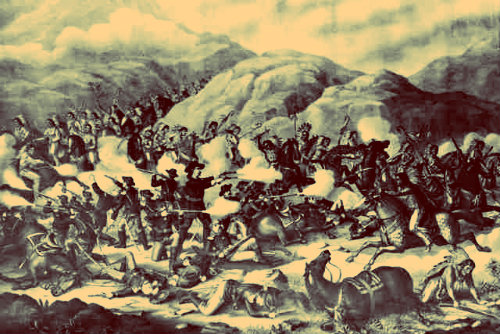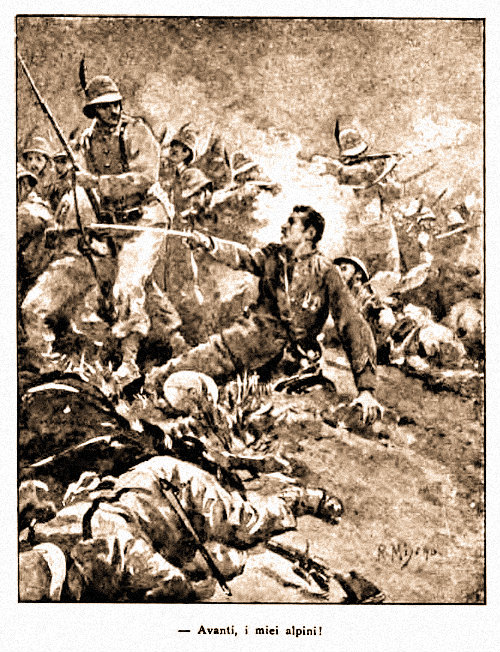Here’s the War History Online take on the top ten military disasters that occurred throughout war history.
For every win, there’s a loss. The same in war. And these wins are aided by some military blunders committed by the other side. This top ten military disasters list is concerned with the factors that brought the devastating defeat of the other side — from the foolhardy advice that brought the defeated army in the place of battle to the disastrous mistakes made while engaged in battle like having cheap military equipment or allowing a small army defeat your huge force while you sit around and act like you are not interested with it.
So, let the TOP TEN MILITARY DISASTERS IN WAR HISTORY commence! [arranged by Date]
The Battle of Pliska [811]
The Battle of Pliska was actually a series of battles between Emperor Nicephorus I Genik of the Byzantine Empire and Khan Krum, leader of Bulgaria.
Nicephorus marched to Bulgaria carrying with him a force of 80,000 men, ignored Krum’s plea for peace and sacked Pliska, the Bulgar capital. The one mistake he did, however, was to stay in the city, loot the treasury of the Bulgar leader and just basically being a jerk. This gave the Bulgarian army time to block the passes in the Balkan mountains and eventually ambushed the Byzantine emperor and his army when they decided they had enough of Pliska and made their way home.
The result — Nicephorus got killed along with most of his men and Krum ended up with his skull which he encased in silver and used for drinking wine.
The Battle of Issus [333 BC]
Occurring in 333 BC, Persian Darius III, who proclaimed himself the King of Kings, led his Achaemenid Persian force, quite a huge army, into battle against a much smaller force led by who was then a nobody and hailing from a backwater city-state, Alexander the Great.
But then, Darius III had to contend with civil unrest back home. Additionally, his huge army also required a massive amount of provisions, something that was hard to come by. Another factor was the battlefield where the two armies met and decided to make their battlefield was small favoring the much smaller army of Alexander the Great.
In the end, Darius III got defeated by the Hellenic League personally led by the Macedonian conqueror. The defeat sent the “King of Kings” fleeing for his life leaving his gear and even his family behind. On the other hand, it was Alexander the Great’s second great battle in his conquest of Asia.
The Battle of the Teutoburg Forest [9 CE/AD]
The Battle of the Teutoburg Forest is considered by many modern historians as the “greatest defeat of Rome” and one of history’s most crucial battles.
In this battle, three legions of the Roman Empire along with their auxiliaries, led by Publius Quintilius Varus, got defeated by an alliance of Germanic tribes under the leadership of Arminius.
Arminius was a Roman citizen and had received Roman military education. His being a citizen of the empire allowed him to deceive the Roman commander personally while his knowledge about Roman warfare allowed him to perceive what the Romans would do in response to their [the Germans] attacks.
In the end, all three legions – numbering to about 20,000 Roman soldiers – perished.
The Battle of Bannockburn [1314]
The Battle of Bannockburn was an important Scottish victory during the First War of Scottish Independence, thus, was a landmark within the history of the Scots.
Edward II [depicted in Braveheart as the preposterously and worthless heir to the English throne] led a massive army comprised of experienced and in general, impressive, army to Scotland in 1314. Meanwhile, Scot King, Robert the Bruce, held back the Scottish force which was much smaller compared to what the English ruler brought with him.
That was until Edward II attempted to cross Bannockburn River. The attempt was so disorganized Robert the Bruce saw it as an opening and charged. Seeing the Scottish leader, Edward’s cavalry tried to charge against the Scot’s infantry but was repelled and eventually, the English cavalry fled allowing Robert the Bruce to inflict heavy losses on the rest of the highly disorganized English army.
Edward II lost half of his army in that fateful battle.
Battle of Agincourt [1415]
Notable for its use of the English longbow as a war weapon, the Battle of Agincourt was between the French and the English which ended up in a leading English victory in the Hundred Years’ War.
There has been a debate on the ratio of French to English soldiers in this battle. According to French estimates, the French force outnumbered the English by thousands while English estimates put the French to English ratio at six soldiers to one. One fact remained for this battle, though — the English were greatly outnumbered by their enemy.
But then, while the other side was eager, they were indecisive and only attacked when the English had been fully fortified. They charged quite disastrously towards the long pikes that protected the English and Welsh archers. So, the losers [in this case, the French] lost men that were six to fifty times more in number compared to the battle winners.
The Siege and Fall of Tenochtitlan [1521]
A decisive occurrence in the Spanish Conquest of Mexico, the siege and fall of the Aztec Empire capital was aided by a slew of factors — disease [smallpox], politics, fighting within the Aztecs and ultimately, betrayal.
Fact was there were only 350 Spanish conquistadores who landed on the Mexican shores but within the span of less than twenty-four months, they were able to subdue and conquer the Aztec Empire, crumbling it and leaving countless Aztecs dead.
How could the Aztec Emperor, Moctezuma, who had thousands of men at his disposal fail to crush the Spaniards early on? We may never know.
The Spanish Armada [1588]
Spain was the 16th-century European superpower and in her quest to overthrow the rule of Queen Elizabeth I of England, she sent her armada, comprised of 130 ships, to invade England.
Unfortunately, though the number of the Spanish Armada was massive, it relied heavily on an outdated way of sea combat and used gunnery only as a precursor to boarding. Furthermore, the fleet’s movement had a specific time line which left many of the vessels waiting idly around; that or battling stormy sea weather.
In the end, Spain lost about 20,000 men. Most of them perished due to storms and ship worms and barely with engaging in battle with the English.
The So-called Battle of Karansebes [1788]
You might have noticed the “so-called” word above and that is because this battle was, we could say, self-inflicted. In this list, this is the only occurrence wherein the an army defeated itself with the factors of drunkenness and confusion playing major roles. Personally, this could be the worst among the military disasters in this list.
Here’s the story.
The Austrian army, numbering to as many as 100,000 strong and able men, set camp near the town of Karansebes [now Caransebes which is located in Romania]. The vanguard of the army crossed the river to scout for the presence of Ottoman Turks. The hussars found none. Instead, they spotted a group of Gypsies who offered them schnapps which they gladly bought and drank.
Soon, a group of infantrymen crossed the river and, upon seeing the drinking party, demanded that they be shared the alcohol. The drunk hussars refused and set up a makeshift fortification around the barrels. Eventually, a heated argument arose and one soldier fired.
To make the long story short, the rest of the army woke up from all the firing and in terror and confusion, started to shoot every shadow that passed by thinking they were being attacked by Turks. Some fled the scene in fear.
It was only two days after this disaster that the real Ottoman Army arrived and saw 10,000 dead and wounded Austrian soldiers. They easily took hold of Karansebes.
The Battle of Wabash [1791]
The Battle of Wabash is, arguably, the worst military defeat of America throughout its history.
In this event, American General Arthur St. Clair went ahead on a Midwest expedition despite internal problems within the troops he brought with him — there were mounting discipline difficulties and desertions.
The Native Americans ambushed St. Clair and his group near the Wabash River and everything down-slid from there. St. Clair’s men just hid and fled despite their leader’s desperate and fruitless attempts to rally them.
In the end, out of the 1,000 soldiers who were with him, only 48 men survived.
The Battle of Adwa [1896]
What are the odds that an African nation would defeat a European superpower? We would probably say, “none”. But 1896 was a different story.
It was the year that the Ethiopians defeated the Italians allowing them to gain their independence as a state and the defeat was all because of two military mistakes committed by the Italian Army’s leader.
For one, General Oreste Baratieri brought with him an army vastly outnumbered by the Ethiopians. Secondly, his forces brought with them cheap and crappy military equipment including crappy maps.
Baratieri’s men marched through the night, got separated and couldn’t reorganize rightly because as what was said beforehand, their maps were useless.So, the Italians were badly defeated in that battle and they were forced to recognize Ethiopia’s independence. Not only that. Since Baratieri and his men left all of their military equipment behind, the Ethiopians were able to gain them and use them for their own.
